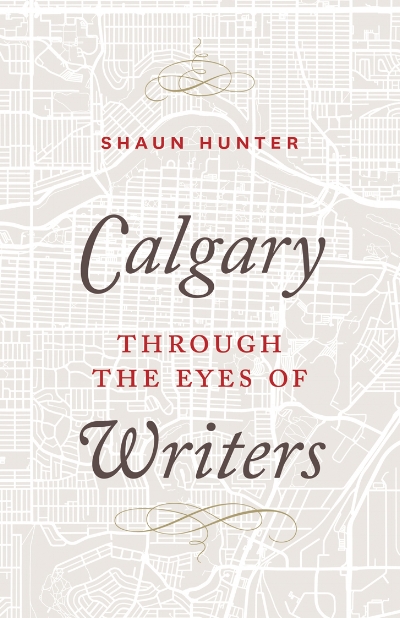Calgary’s 8th Avenue in 1911 (Photo: Calgary Public Library Williams & Harris Shared History Centre)
This article first appeared in the Chinook Country Historical Society newsletter in November 2018.
On a summer night in 1911, an anonymous city-watcher wandered down Calgary’s busy 8th Avenue. The economy was booming and the weather was perfect for making literary wishes.
“If some great master of fiction could only look into the hearts of some of those that pass, what a novel he could write,” our observer wrote in the July 20, 1911 Calgary Herald. “A book might be filled about this street and its people by one who has seen and known.”
If our city-watcher had been able to glimpse beyond the “ebbing, flowing crowds” on 8th Avenue, she or he might have noticed the seeds of a literary culture already sprouting in early Calgary.
This was a city of readers.
Bookstores on 8th Avenue like Linton’s, Mackie’s and Osborne’s vied to satisfy Calgarians’ thirst for newspapers, magazines, books and educational texts. Citizens had their own private libraries, perhaps the most impressive being James and Isabella Lougheed’s, a collection said to have included 10,000 volumes.
Newspapers like the Weekly Herald, the Morning Albertan and the Calgary Eye Opener would have noted the progress of the city’s new public library in the final stages of construction in Central Memorial Park. The project was spearheaded not by city politicians, but by a group of avid readers: members of the Calgary Literary Women’s Club established in 1906 in Annie Davidson’s 13th Avenue living room.
When the library opened in January 1912, chief librarian Alexander Calhoun noted that “the cupboard was bare in a few days.”
Early Calgary was also a city of writers.
In 1910, journalist Ethel Heydon helped found the Calgary chapter of the Canadian Women’s Press Club: the city’s first organization of writers. A few months after our city-watcher’s visit in 1911, students at the year-old Mount Royal College at 7th Avenue and 11th Street West would form their Literary Society; the group would become the heart of the college’s intellectual and cultural life. At the Society’s first meeting? Students decided to publish Chinook, a semi-annual literary journal featuring student prose and poetry.
In the summer of 1911, Bob Edwards was a fixture on 8th Avenue and Calgary’s bard. By 1908, his satiric weekly the Eye Opener had a circulation 18,500, and was read and remarked upon not only by Calgarians, but by readers across the country and as far away as New York and London, England.
“Had he lived longer,” Grant MacEwan wrote about Edwards, “consumed less whisky, and possessed more ambition for personal advancement and fame, he might have shared immortal honours with the likes of Mark Twain.”
Bob Edwards was not the only writer who saw early Calgary’s literary possibilities. George Kerby published his bestseller The Broken Trail in 1909, a year before the Methodist minister founded Mount Royal College. His book included “The Desperado” – the story of Kerby’s visits with a fictionalized Ernest Cashel in the Calgary jail before the outlaw was hanged in 1904 at the North-West Mounted Police barracks.
Isabel Paterson saw the young city as an ideal setting for fiction. Between 1905 and 1910, she worked at the CPR’s land division and for R. B. Bennett in his Clarence Block law office on 8th Avenue. Her two Calgary novels, The Shadow Riders (1916) and The Magpie’s Nest (1917) offer a vivid look into the shenanigans of land speculators and streetcar politics.
Of The Shadow Riders, Paterson said: “[T]his story could not have happened anywhere else. […] I could not have imagined it anywhere else. If I had tried to place it in another city, there would have been no story.”
Read Paterson’s Calgary novels today (both are available online) and you will see young people hungry for urban life and women who chafe at society’s expectations. To me, these century-old Calgary stories still feel fresh and relevant.
Early Calgary held more literary promise than our city-watcher observed on that summer night in 1911. Readers, writers, newspapers, literary journals and organizations, and a carefully curated public library: these were the seeds of a literary culture that would continue to blossom in subsequent decades.
Curious about how that story unfolds? I hope you’ll check out my book Calgary through the Eyes of Writers. There you will find early Calgary on the literary page, and much more.










